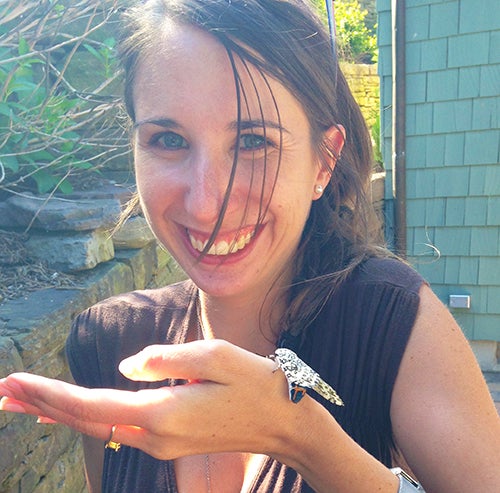The arrival of summer brings much excitement to Cold Spring Harbor and the Watson School—barbeques, volleyball, horseshoe crabs, and URPs. The swarm of URPs—officially, Undergraduate Research Program students—come for the summer from universities all over the world to do research in a CSHL lab. They learn what it’s like to be a scientist: they work on a real research question, spending long hours in the lab to get results. The URPs swim and kayak, make s’mores, learn Python, and see a show on Broadway. It’s a challenging summer but one in which the students make some great friendships and learn valuable skills for their futures. Most URPs continue on to very competitive graduate programs in biosciences or medicine.

Lital Chartarifsky is no exception. Lital was an URP in 2011, during the summer break from her studies at the Hebrew University of Jerusalem. Lital was assigned to work in the lab of CSHL Professor Adrian Krainer. The title of her project was “The Alternative Splicing Factor SRSF6—A Proto-Oncogene?” On the first weekend of her URP summer, Lital cried. Not because she didn’t love her research, but maybe because she loved her research too much. She worked for hours and hours that first weekend of the summer—while all of her fellow URPs enjoyed the weekend in New York City. But the weekend paid off and Lital’s research went well that summer. She had a great time at CSHL and found a true love for RNA splicing.
Lital spent the next two years working on her Master’s degree, studying how mis-regulation of RNA splicing contributes to disease. In 2013, she joined the Watson School for her Ph.D., still fascinated by splicing and cancer. But then something very unexpected happened—Lital gave up RNA and became a neuroscientist. She’s interested in the neural circuits that make decisions. In CSHL Associate Professor Anne Churchland’s lab, she’s studying how rats integrate what they see and hear to make choices, especially when the “correct” choice is not obvious. She’s learning how to attach a camera to a rat’s head so she can watch the neurons firing in the brain. She’s learning linear algebra and more programming. She’s coming up with new ways to figure out what a rat is thinking. Lital doesn’t think much about splicing at the moment. “I had been studying splicing for so long. I wanted a change. And neuroscience is so cool!”
At CSHL, there is a distinct lack of boundaries between disciplines. Geneticists work with computational biologists, plant biologists work with cancer biologists, and neuroscientists work with RNA biologists. Or as in Lital’s case, they can be one in the same. The lack of boundaries extends to the educational framework of the Watson School. Even though Lital entered the program thinking about RNA, sitting through the Fall Term lectures on plasticity, fear, perception, spines, spikes, and everything else, she quickly realized the fascination that neuroscience holds. The interdisciplinary research at CSHL is also one of the things that attracted Lital to the Lab as an URP in the first place. She finds that the informal environment promotes a lot of interaction among scientists, which gives rise to collaborative projects.
Now that Lital is a graduate student starting on her Ph.D. thesis, what was it about being an URP at CSHL that inspired her? “One of the things that I liked the most was the feeling that even as an undergraduate I was treated equally to more experienced students and researches. I was asked questions about my research and my opinions were taken into account. I loved it the feeling that this is a community in which everyone knows each other and you’re not just ‘one more student’ at the Lab.”